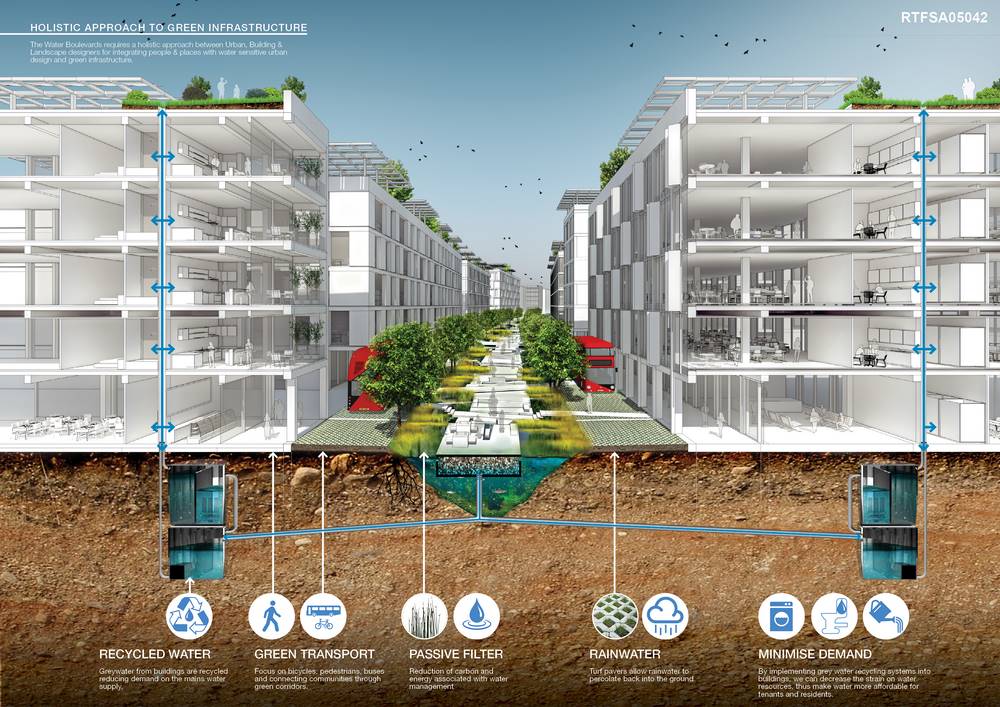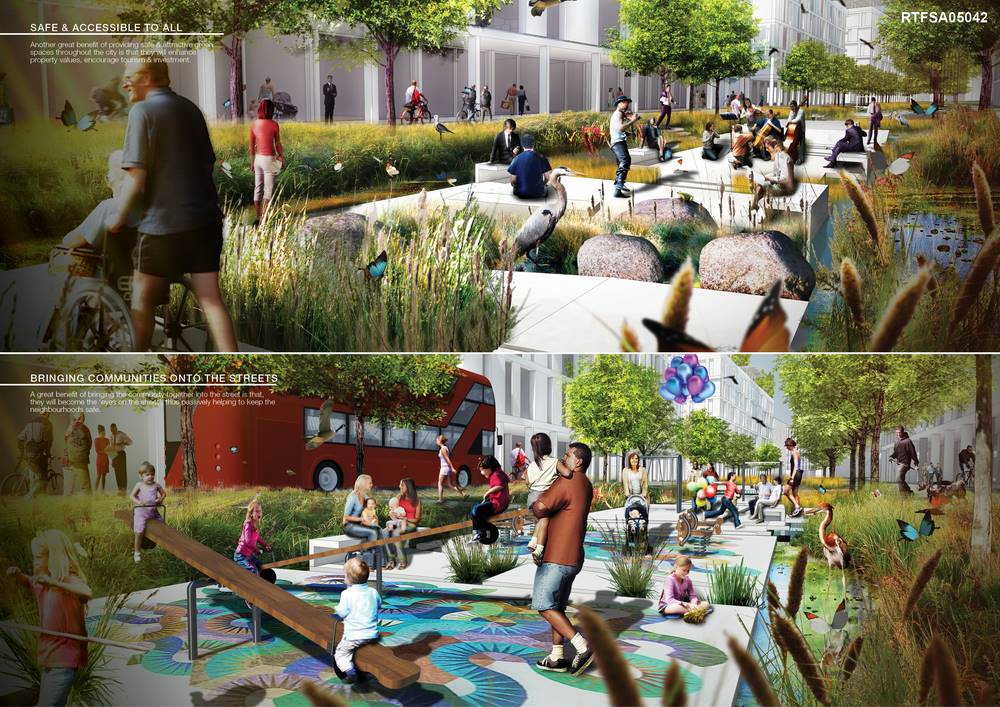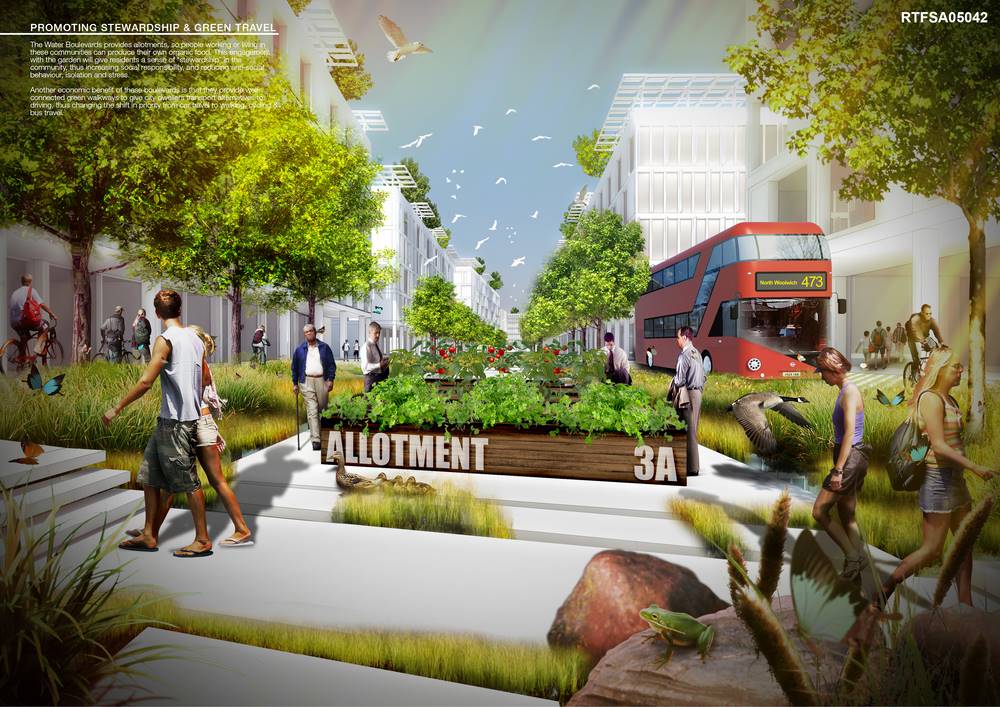Promoting green infrastructure and sustainable living into our cities, for the creation of healthy places is no longer a choice, it has become a necessity. Today, it is estimated that more than 680,000 properties across London are at risk of flooding. In total, around 5 million people, in 2 million properties, live in flood risk areas in England and Wales.
Architect: Baharash Architecture
Country: United Kingdom

The rise in population in London and other cities across the world is going to be increasing at a dramatic rate for the remainder of this century, which coupled with climate change, is going to have a great impact on how our cities’ infrastructures can deal with flooding. The brief for this project was to develop a solution that will mitigate the risks of flooding, whilst also creating healthy places for people to live, work and visit.

SOLUTION: The project is called “Water Boulevards”, which integrates green infrastructure and water sensitive urban design into our streets, and can be applied as a network of green corridors to any city in risk of flooding to promote the three pillars of sustainability.
I. Economic Sustainability
The natural tranquillity of the Water Boulevards will provide for premium retail frontages, thus increasing footfall and retail demand, which in turn creates more jobs. The cost savings and efficiencies from water recycling and productive gardens will also be an economic benefit.
II. Environmental Sustainability
The ponds, swales and reed beds of the water boulevards, passively reduce flood risk, provide temporary storage and improve water quality, while creating wetland habitats for wildlife in an attractive aquatic setting.
III. Social Sustainability
The Water Boulevards will connect communities together while promoting engagement in water management and increasing social responsibility by encouraging a sense of “stewardship” in the community.

VARIATION OF EVENTS AND ACTIVITIES: Along the green spine, there will be variation of spaces, gardens and events that people can experience, all of which are accessible to everyone. The beauty of these spaces is that they are all connected in a unique and healthy forest-like setting, from tranquil gardens, to meadows, games gardens, café gardens and playgrounds which will bring people closer to nature. Ultimately there are many activities that we can incorporate into these spaces to ensure that the forested street can serve multiple uses and users.

In some parts there are ponds, which help to passively reduce any flood risk by providing temporary storage for water whilst they are naturally kept clean by the aquatic plants.

FUTURE PROOFING: The boulevards can be extended to other surrounding streets to ensure continuous resilience to future needs. Each street could have its own typology and unique character by using different plants and hardscaping materials, which also helps with way finding in the city. They all have one thing in common which is that they all provide for a linear aquatic-like park, which can collect and filter rain water.
Ultimately, the Water Boulevards will transform dense cities into a series of healthy floating sustainable villages for the 21st Century.





